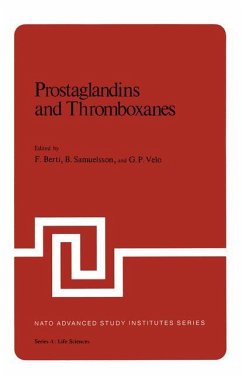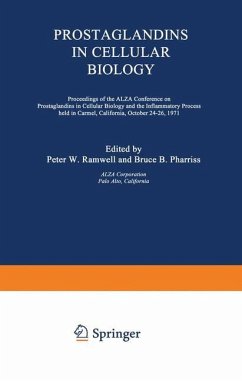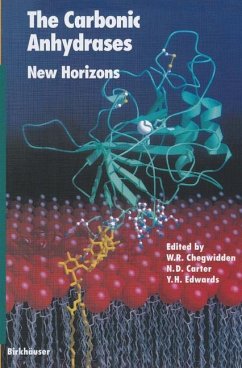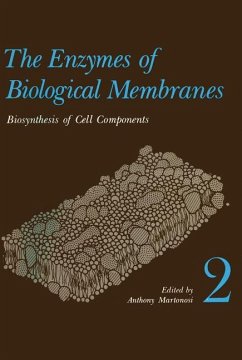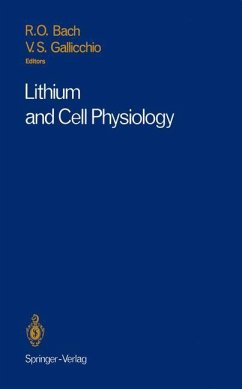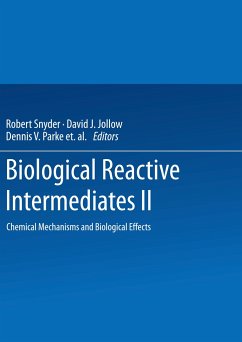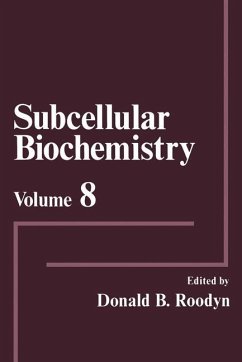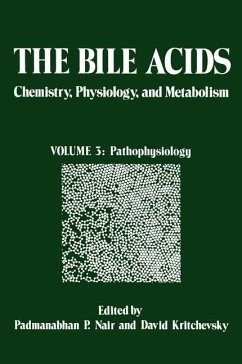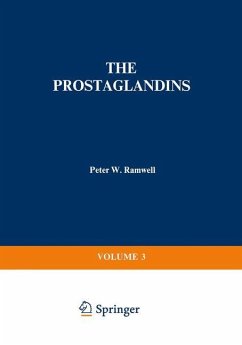
The Prostaglandins
Volume 3
Herausgegeben: Ramwell, Peter

PAYBACK Punkte
20 °P sammeln!
1 Gas Chromatography-Mass Spectrometry of Prostaglandins.- I. Introduction.- II. Mass Spectrometry Systems for Prostaglandin Analysis.- III. Methods of Extraction and Chromatography.- IV. Biological Applications.- V. References.- Note Added in Proof.- 2 Prostaglandin Biosynthesis and Metabolism as Measured by Radioimmunoassay.- I. Introduction.- II. Serological Specificities of the Prostaglandin Immune Systems.- III. Prostaglandin Synthetase.- IV. Prostaglandin E 9-Ketoreductases.- V. 15-Hydroxyprostaglandin Dehydrogenases.- VI. Prostaglandin ?13-Reductase.- VII. PGE Dehydrase, PGA Isomerase, ...
1 Gas Chromatography-Mass Spectrometry of Prostaglandins.- I. Introduction.- II. Mass Spectrometry Systems for Prostaglandin Analysis.- III. Methods of Extraction and Chromatography.- IV. Biological Applications.- V. References.- Note Added in Proof.- 2 Prostaglandin Biosynthesis and Metabolism as Measured by Radioimmunoassay.- I. Introduction.- II. Serological Specificities of the Prostaglandin Immune Systems.- III. Prostaglandin Synthetase.- IV. Prostaglandin E 9-Ketoreductases.- V. 15-Hydroxyprostaglandin Dehydrogenases.- VI. Prostaglandin ?13-Reductase.- VII. PGE Dehydrase, PGA Isomerase, and PGC Isomerase.- VIII. Regulation of PGE and PGF Levels.- IX. References.- Note Added in Proof.- 3 The Endocrine System: Interaction of Prostaglandins with Adenylyl Cyclase-Cyclic AMP Systems.- I. Introduction.- II. Thyroid.- III. Pituitary.- IV. Pancreas.- V. Adrenal.- VI. Ovaries.- VII. References.- 4 Induction of Labor with Prostaglandins.- I. Historical Background.- II. Induction of Labor with Intravenous Prostaglandins.- III. Other Routes of Administration.- IV. Conclusions.- V. References.- 5 Cardiovascular Responses to the Prostaglandin Precursors.- I. Introduction.- II. Blood Pressure.- III. Cardiac Effects.- IV. Renal Circulation.- V. Pulmonary Circulation.- VI. Other Regional Circulations.- VII. Platelets 141 VIII Summary.- IX. References.- 6 Role of Prostaglandins in Fever and Temperature Regulation.- I. Introduction.- A. Temperature Regulation B. Fever 148.- II. Role of PGs in Fever.- III. PG Synthesis in Brain during Fever.- IV. Difficulties with the PG Hypothesis.- V. PGs in Normal Temperature Regulation.- VI. Summary of the Existing Evidence.- VII. Addendum.- VIII. References.- 7 Prostaglandins and the Lung.- I. Introduction.- II. Prostaglandin Content andSynthesis in the Lung.- III. Catabolism and Uptake of Prostaglandins in the Lung.- IV. Release of Prostaglandins from the Lung.- V. Bronchopulmonary Effects of Prostaglandins.- VII. Summary and Conclusions.- VIII. References.- Note Added in Proof.- 8 Prostaglandins and the Digestive System.- I. Introduction.- II. Salivary Glands.- III. Esophagus.- IV. Stomach.- VI. Bile and Pancreatic Secretion.- VII. Cytoprotection by Prostaglandins.- VIII. References.- 9 Prostaglandins and Renal Function, or "A Trip down the Rabbit Hole".- I. Introduction.- II. Prostaglandin Synthesis and Metabolism.- III. Role of Prostaglandins in the Control of Renal Blood Flow.- IV. Role of Prostaglandins in Salt and Water Homeostasis.- V. Conclusion.- VI. References.- Note Added in Proof.- 10 Prostaglandins and Cancer.- I. Introduction.- II. Prostaglandin Synthesis by Tumors and Its Effects on Tumor Cell Replication.- III. Prostaglandins, Bone Resorption, and Hypercalcemia.- IV. Conclusions.- V. References.






